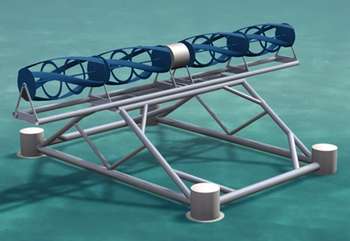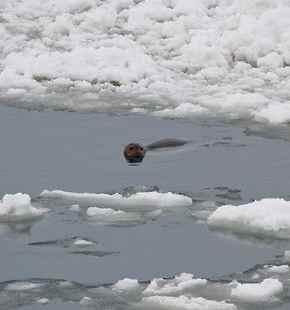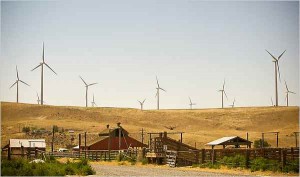
Five environmental organizations have filed a legal petition asking NOAA to enforce speed limits in National Marine Sanctuaries off the California coast. If NOAA does not take action within a year, the groups say they may sue to under the Marine Mammal Protection Act. “Our marine sanctuaries should be a safe harbor for marine life, but instead whales in California are at constant risk of being run over by big ships,” said Miyoko Sakashita, oceans director at the Center for Biological Diversity. “Mandatory speed limits for ships traveling through our marine sanctuaries will save whales and clean our air.” Slower ship speeds also significantly reduce a ship’s noise, which could be a welcome relief in such a heavily trafficked area.
In the past decade, nearly 50 large whales off California have been struck by ships. Last year, at least six were killed in collisions. A key factor in the decision about lowering ship speeds is likely to be whether the loss of less than ten whales a year warrants the change (more whales may be struck and sink without being seen). Along portions of the East Coast, federal authorities have imposed a 10-knot speed limit for ships 65 feet or longer for the past several years in order to protect the North Atlantic right whale, which is critically endangered, numbering only around 300 animals, so the loss of any individual is a blow to the population’s future.
The groups are advocating a similar mandatory speed limit of 10 knots (about 11 mph) for all ships larger than 65 feet while sailing through California’s four national marine sanctuaries, which stretch from the Marin Headlands north of San Francisco, 300 miles down the coast to the Channel Islands north of Los Angeles. Ship speeds are now usually 13-25 knots. Since 2007, when four blue whales were struck by ships near the Channel Islands National Marine Sanctuary, NOAA has issued seasonal bulletins urging a 10 knot speed limit from May-December, when the blues are most numerous; environmental groups say most ships ignore this voluntary advisory, while shipping groups say most ships do adhere to it.
Shipping industry officials said Monday that they do not oppose a speed limit but won’t endorse one, either, until more study is done showing it can reduce collisions. “Nobody wants to hit a whale, just like nobody driving down the highway wants to hit a deer,” said John Berge, vice president of the Pacific Merchant Shipping Association. “If we can find a way to mitigate the risk of whale-ship interactions that is supported by sound science, we’re open to that.”
A growing number of ships, along with rebounding populations of whales, and shifting krill populations, have increased the strikes, said biologist John Calambokidis, with Cascadia Research, in Olympia, Wash. Slowing ships would reduce injury when there are collisions, he said, but nobody knows for sure if it will reduce the number of collisions. One study cited in the petition noted that of 28 serious or lethal whale injuries evaluated, none occurred when the ship involved was traveling more slowly than 10 knots.
Other ongoing work, such as a Coast Guard study looking at redrawing shipping lanes off San Francisco and Los Angeles, are at least as important, he said, and appear to be working in Boston. “I support this petition,” he said, “but I think we shouldn’t lose site of shifting the shipping lanes as the primary, known effective line of attack.”




